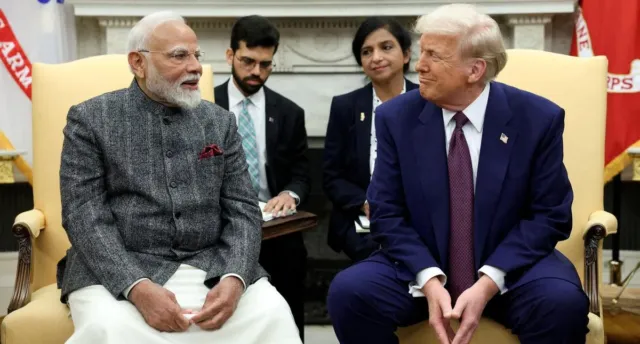
H-1B Visas: Examining the Impact on Indian Workers and US Immigration
The H-1B visa, a non-immigrant visa that allows U.S. employers to temporarily employ foreign workers in specialty occupations, has become a focal point in discussions surrounding immigration and the U.S. workforce. Recent data from the U.S. government sheds light on the significant role Indian workers play in this program.
Since 2015, individuals from India have consistently accounted for over 70% of all H-1B petitions approved annually. This substantial percentage underscores the reliance of U.S. companies on skilled workers from India in various sectors, including technology, engineering, and finance. The H-1B visa program is designed to enable U.S. employers to fill positions requiring specialized knowledge and skills when there is a shortage of qualified American workers.
The high percentage of Indian H-1B recipients reflects several factors. India boasts a large pool of highly educated and skilled professionals in fields crucial to the U.S. economy. Furthermore, many Indian workers possess strong technical expertise and experience, making them attractive candidates for U.S. employers. The efficiency of Indian IT service companies in navigating the H-1B application process also contributes to their success rate.
However, the H-1B visa program is not without its critics. Some argue that it depresses wages for American workers and leads to job displacement. Others contend that it is exploited by companies to outsource jobs and reduce labor costs. These concerns have fueled debates about reforming the H-1B visa program and tightening eligibility requirements.
The debate surrounding H-1B visas also involves the question of whether the U.S. education system is producing enough graduates with the skills needed to meet the demands of the modern economy. Proponents of the H-1B program argue that it is essential for maintaining U.S. competitiveness and innovation by attracting the best and brightest talent from around the world.
The Trump administration implemented stricter enforcement measures and increased scrutiny of H-1B petitions, leading to a decline in approval rates. This created uncertainty for both employers and prospective employees. The Biden administration has signaled a more nuanced approach, focusing on ensuring that the program benefits both U.S. workers and employers.
The ongoing discourse surrounding H-1B visas highlights the complex interplay between immigration, economic competitiveness, and workforce development. As the U.S. continues to grapple with these issues, the H-1B visa program will likely remain a central point of discussion and potential reform.
Understanding the nuances of the H-1B visa program is crucial for anyone interested in the future of work, immigration policy, and the global flow of talent. The high percentage of Indian H-1B recipients demonstrates the significant role they play in the U.S. economy and the broader immigration landscape.
Disclaimer: This news article is based on publicly available information and may be subject to updates.
📢 Stay Updated!
For more news and updates, explore related categories below:




